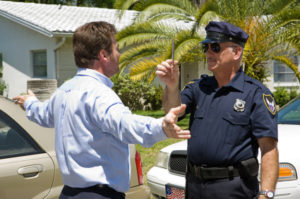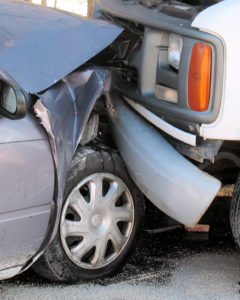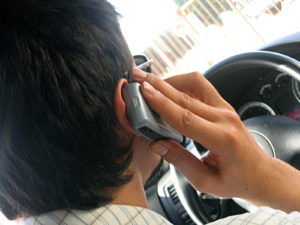High Risk Auto Insurance
 Some drivers try to be safe, and others seem to believe that the laws and the rules of the road are for other people. You see high-risk drivers pulled over on the side of the road for speeding, exchanging insurance information at the scene of an accident, or trying to walk a straight line at a sobriety checkpoint. Such drivers are truly the hardest to insure.
Some drivers try to be safe, and others seem to believe that the laws and the rules of the road are for other people. You see high-risk drivers pulled over on the side of the road for speeding, exchanging insurance information at the scene of an accident, or trying to walk a straight line at a sobriety checkpoint. Such drivers are truly the hardest to insure.
Click here to search for auto insurance quotes by putting your ZIP into the FREE box now!
Insurance for high-risk drivers is going to be expensive; there really is no way around it. However, high-risk drivers do need to be wary that they are not being conned as they search for low cost insurance. Furthermore, there are some ways to lessen the high-dollar burden of high-risk insurance.
Who High Risk Drivers are
You can be labeled as a high-risk driver for many different reasons. Some are out of your control, such as age. Some insurers place the oldest drivers and the youngest drivers into high-risk categories. Statistically speaking, old and young drivers are involved in more accidents. However, most high-risk designations are created by the actions of the drivers themselves.
 Having multiple violations of traffic laws can get you designated as high risk. Violations such as speeding, neglecting to wear a seatbelt and reckless driving are all dangerous driving behaviors. Auto insurers know that such behaviors lead to accidents, which creates claims, so they aren’t clamoring to insuring such drivers.
Having multiple violations of traffic laws can get you designated as high risk. Violations such as speeding, neglecting to wear a seatbelt and reckless driving are all dangerous driving behaviors. Auto insurers know that such behaviors lead to accidents, which creates claims, so they aren’t clamoring to insuring such drivers.
Furthermore, drivers who have serious violations such as hit-and-runs, DUIs, and serious accidents are considered to be in the highest risk category. Multiple violations or a combination of violations, such as an accident caused by a DUI driver, will make it pretty hard to find auto insurance coverage at all.
Why it Costs More
Auto insurance for high-risk drivers is some of the most expensive coverage out there. Those drivers who are repeat offenders have the most expensive rates. This is because auto insurance premiums are all based on the risk of having to put in a claim in the future.
All of the factors that car insurance companies look at are meant to determine risk. Insurers look at how much you drive because the more you drive, the more likely you are to be in an accident. They look at gender because men tend to be in more accidents than women are. They look at your credit and your education level because educated people who pay their bills on time are drivers that are more cautious.
 High-risk drivers have a bad record of judgments in the category that matters the most to insurance underwriters: a past driving history. They have shown that they are not concerned about driving safely and that they are more likely to be in another accident. Thus, they have to pay more to offset the risk. Insurers are basically hedging their bets when they charge high-risk drivers more.
High-risk drivers have a bad record of judgments in the category that matters the most to insurance underwriters: a past driving history. They have shown that they are not concerned about driving safely and that they are more likely to be in another accident. Thus, they have to pay more to offset the risk. Insurers are basically hedging their bets when they charge high-risk drivers more.
If you have had a good number of tickets, accidents, or violations, then insurance underwriters will compare your likelihood for being in an accident in the future with all the other drivers they insure. If your likelihood is higher, then you will be labeled high-risk.
Most car insurance companies use tiers of risk to determine premium prices. Drivers in lower tiers are less likely to get into an accident. They usually are seasoned drivers with no accidents and benchmarks of good decision-making, such as a high credit score.
Drivers in the higher tiers have proven through past driving history, or through statistics for young and old drivers that they are more likely to get into an accident and need to file a claim.
Car insurance companies are businesses. The money they take in from customers must be more than the money they pay out in claims.
SR-22 Documentation
There are other insurance requirements that some high-risk drivers generally have to complete beyond paying the high price for car insurance. Most states require drivers convicted of DUI or driving without insurance to submit SR-22 documentation.
According to the Illinois Secretary of State, SR-22 documentation is a requirement that is aimed at making sure that a high risk driver maintains vehicle insurance when it comes time for his or her license to be reinstated. For this reason, some states also refer to it as financial responsibility insurance.
 The insurance company is notified that the insurance they are providing requires SR-22 documentation. The SR-22 form is filled out and returned to a state’s Department of Motor Vehicles. The offending driver’s license can then be reinstated, after any other conditions have been met. SR-22 insurance documentation is required even if the driver doesn’t own a car. This insurance is available to cover any vehicle the driver operates.
The insurance company is notified that the insurance they are providing requires SR-22 documentation. The SR-22 form is filled out and returned to a state’s Department of Motor Vehicles. The offending driver’s license can then be reinstated, after any other conditions have been met. SR-22 insurance documentation is required even if the driver doesn’t own a car. This insurance is available to cover any vehicle the driver operates.
SR-22 documentation is required for a number of years, depending upon the state’s laws and the violation involved. If the driver drops the insurance, the auto insurance company will notify the Department of Motor Vehicles, and the driver’s license will be revoked.
Many auto insurance companies specialize in providing high-risk auto insurance; it is oftentimes referred to as SR-22 insurance.
Car insurance companies for high-risk auto insurance can advertise low rates for SR-22 insurance all they want, but don’t be fooled! Insurance for high-risk insurance will always be expensive to offset the risk.
Free Car Insurance Comparison
Compare Quotes From Top Companies and Save
Secured with SHA-256 Encryption
Research High Risk Companies First
When searching for an insurer for your SR-22 insurance, make sure to do your homework. High-risk auto insurance is more apt to include fraud, because risky drivers are more desperate to find coverage. Because the companies who will insure high-risk drivers are much fewer than standard insurance companies, and high-risk insurance is so costly, drivers who have been label as such are desperate to find affordable coverage.
 Many high-risk drivers have been duped by scam artists; an insult added to the injury of being labeled as a high-risk driver. They are not alone, according to the Coalition Against Insurance Fraud. According to data collected from the Coalition, two out of every three citizens in the United States tolerate fraud to varying degrees. Some see it as a victimless crime, some feel that insurance companies bring it upon themselves and some feel there is no stopping fraud.
Many high-risk drivers have been duped by scam artists; an insult added to the injury of being labeled as a high-risk driver. They are not alone, according to the Coalition Against Insurance Fraud. According to data collected from the Coalition, two out of every three citizens in the United States tolerate fraud to varying degrees. Some see it as a victimless crime, some feel that insurance companies bring it upon themselves and some feel there is no stopping fraud.
Just like fraud crops up during disasters and emergencies, when people are fraught with worry, the desperation of high-risk drivers looking for affordable insurance puts them at risk. Yet, there is a quick and easy way to safeguard yourself against such fraud. In fact, it is a great safeguard for all drivers, high-risk, or not.
After you have the name of an insurance company, your first stop before you pay any sort of premium is to research the company at your state’s Department of Insurance website. The Insurance Information Institute provides a map that links to every state’s Insurance Department, allowing you to get to your research quickly and easily.
At your state’s Department of Insurance website, you can look up the information of every car insurance company licensed to do business in the state. If you cannot find your high-risk car insurance company, then it is very likely that you are dealing with fraud. You can alert your state to the fraud on the same site you searched for it.
Ways to Offset the High Cost
Every state has its own laws concerning the insurance that they must purchase with SR-22 financial responsibility insurance. There really is no way around paying for the higher cost. Usually it is a condition of reinstatement of your license as well as a driver’s probation.
There are a few things that you can do if you have been labeled as high risk to lower the amounts in the future.
First, drivers need to change the behaviors that lead to high-risk designations. It is not just about the high cost of insurance; it is also about saving lives.
 Data released for 2010 by the Governors Highway Safety Association shows that 10,530 people lost their lives in accidents where speed was a contributing factor. Similar data released by the National Highway Traffic Safety Administration showed that traffic fatalities in the same year from alcohol impairment numbered over 10,000. Those two high-risk driving behaviors account for two thirds of all traffic fatalities in 2010.
Data released for 2010 by the Governors Highway Safety Association shows that 10,530 people lost their lives in accidents where speed was a contributing factor. Similar data released by the National Highway Traffic Safety Administration showed that traffic fatalities in the same year from alcohol impairment numbered over 10,000. Those two high-risk driving behaviors account for two thirds of all traffic fatalities in 2010.
Some high-risk insurers out there offer discounts for continuing good driving behavior and improving your driving education by taking driving courses. Time really is the best factor for lowing high-risk insurance rates, as long as you keep your record clean. Typically, high-risk drivers are looking at anywhere from three to 10 years of having such a designation, depending upon the severity and number of violations.
Of course, you can also drive a vehicle that is cheaper to insure, such as an older or safer vehicle. You can also drive less by utilizing carpooling, public transportation, and walking. It also may be an excellent time to learn how to improve your credit.
Many who adopt new driving and financial behaviors in an effort to lower car insurance rates are surprised at the money and freedoms found with having a safe driving record and good credit.
Compare Online, of Course
 The best way for anyone to lower car insurance rates is by shopping around and comparing prices. This is true for the best drivers and the worst drivers alike. Comparing rates online is generally agreed to be the fastest and easiest ways to find quotes from many car insurance providers.
The best way for anyone to lower car insurance rates is by shopping around and comparing prices. This is true for the best drivers and the worst drivers alike. Comparing rates online is generally agreed to be the fastest and easiest ways to find quotes from many car insurance providers.
Visit car insurance company’s websites or utilize auto insurance quote comparison websites to get many quotes all at once. Usually there is a designation for SR-22 insurance so that you don’t waste any time. In this way, you can find the best rate for high-risk insurance to tide you over while you turn over a new leaf with your driving habits.
Find affordable auto insurance when you click here and enter your ZIP code into the FREE search tool now!
